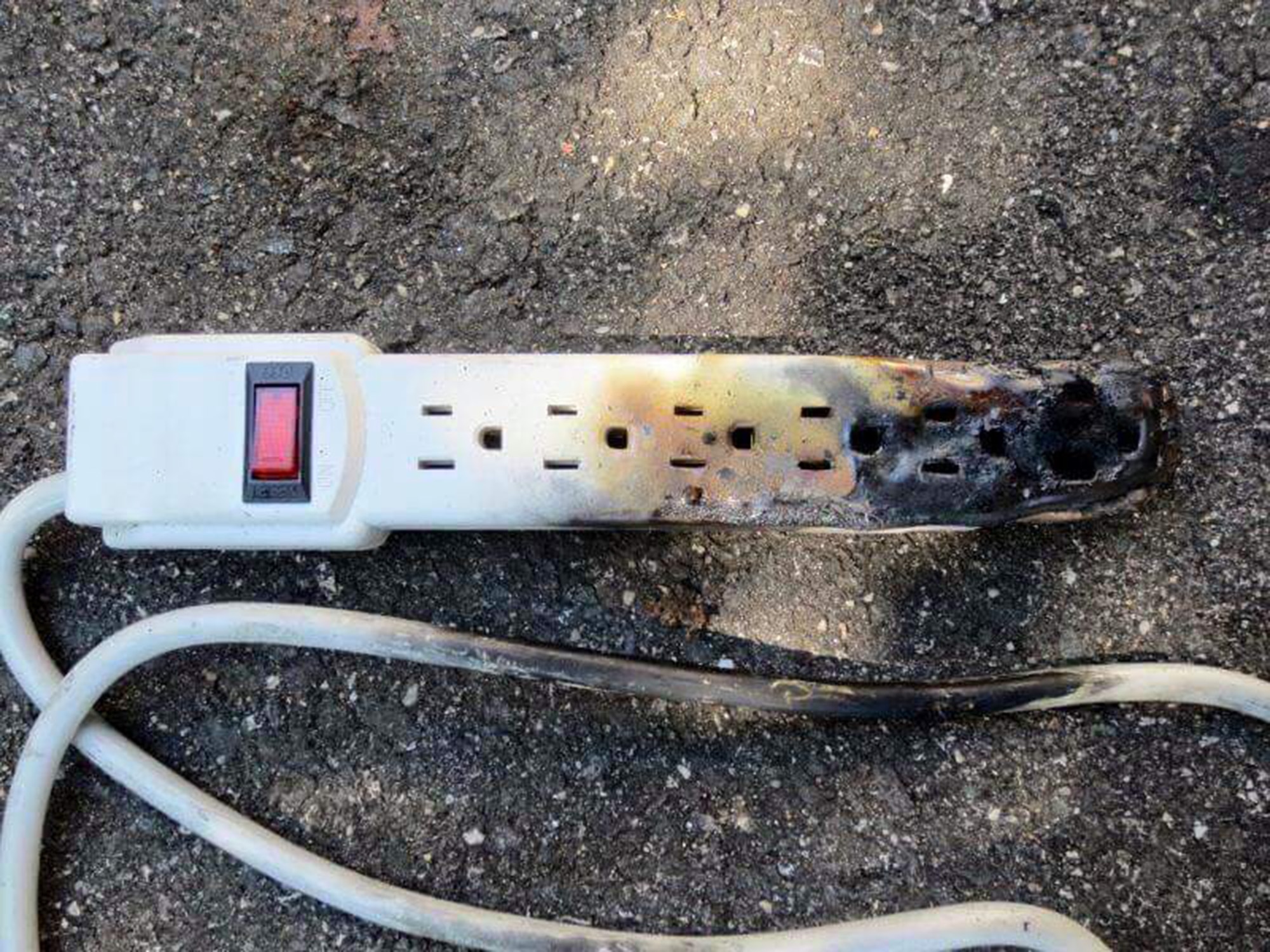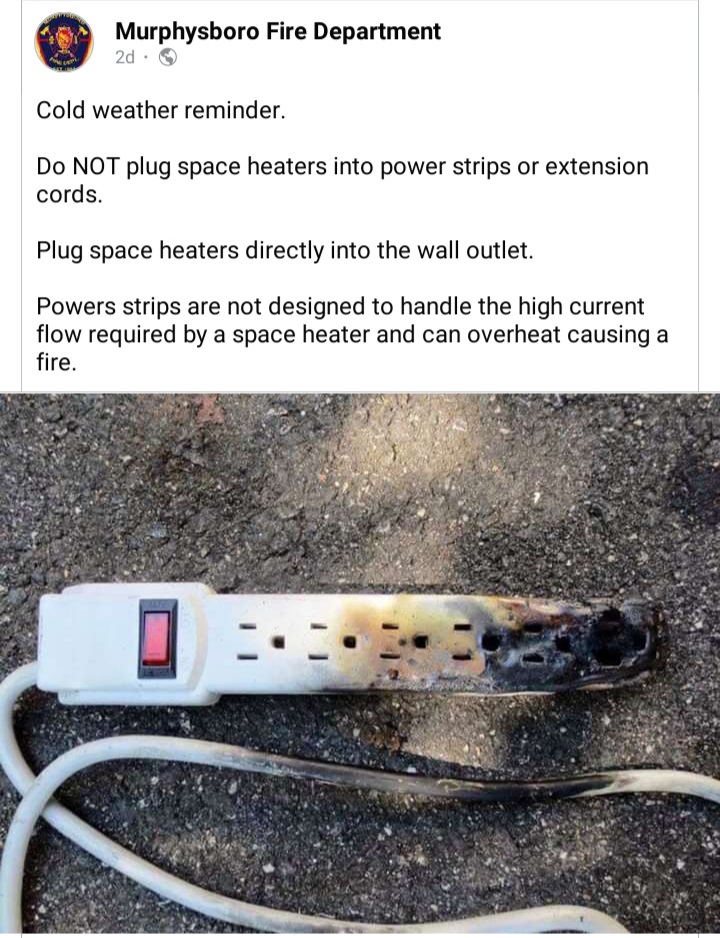No, it is not safe to plug a heater into a surge protector. Heaters draw high electrical currents, risking overload.
Heaters are high-wattage appliances that require dedicated outlets to function safely. Plugging them into surge protectors can lead to overheating, posing fire hazards. Surge protectors are designed for low-power devices like computers and lamps. They can’t handle the electrical load of heaters, which can cause them to overheat and potentially catch fire.
Always plug heaters directly into wall outlets to ensure safety. Using a dedicated outlet reduces risks of electrical fires and ensures the heater operates efficiently. Prioritizing safety with high-wattage appliances helps prevent accidents and ensures your home remains secure.
Introduction To Electrical Safety
Electrical safety is crucial in every home. Misusing electrical devices can cause fires. Understanding electrical safety helps prevent accidents. This guide will focus on heaters and surge protectors.
The Basics Of Surge Protectors
Surge protectors are essential for protecting devices from power surges. Power surges can damage electronics. Surge protectors absorb and redirect excess voltage. This keeps your devices safe. Surge protectors come in various types:
- Basic Surge Protectors
- Advanced Surge Protectors with multiple outlets
- Surge Protectors with USB ports
Choosing the right surge protector is important. Look for ones with high joule ratings. This indicates better protection. Always check the specifications before buying.
Read More:
How to Properly Use a Surge Protector: Safeguard Your Tech
Common Misconceptions About Heaters And Surge Protectors
Many believe it’s safe to plug heaters into surge protectors. This is a common misconception. Heaters draw a lot of power. Surge protectors are not designed for high-power devices. Plugging a heater into a surge protector can be dangerous. It can cause overheating and fires.
Some think all surge protectors are the same. This is false. Not all surge protectors can handle high wattage. Always check the wattage rating. Ensure it can handle the power draw of your device.
| Device | Power Draw (Watts) | Suitable for Surge Protector |
|---|---|---|
| Heater | 1500W | No |
| Laptop | 65W | Yes |
| Phone Charger | 10W | Yes |
Always read the instructions. Manufacturers provide guidelines for safe use. Follow these guidelines to ensure safety.
Analyzing The Risks
Is it safe to plug a heater into a surge protector? This question needs a closer look. Understanding the risks is important. Let’s analyze the dangers of this practice.
Heater Power Requirements
Heaters use a lot of power. A typical heater may need 1500 watts. Check your heater’s label for exact needs. Compare this to the capacity of your surge protector. Most surge protectors can only handle a limited load.
Here is a table for better understanding:
| Device | Power (Watts) |
|---|---|
| Heater | 1500 |
| Typical Surge Protector | 600-1800 |
As you can see, a heater’s power needs may exceed a surge protector’s capacity. This can be dangerous.
Potential Hazards Of Incorrect Usage
Using a heater with a surge protector can cause issues. Here are some potential hazards:
- Overloading: The surge protector may overheat and fail. This can lead to a fire.
- Short Circuit: A short circuit can occur. This might damage both the heater and the surge protector.
- Electrical Fire: If the surge protector fails, it can start a fire. This puts your home at risk.
Always plug heaters directly into a wall outlet. This reduces risk. Safety should be your top priority.
Surge Protector Mechanics
Understanding surge protector mechanics is crucial for home safety. Surge protectors are common devices that guard electrical appliances. But how do they work? Are they effective for all devices, like heaters?
Read More:
How to Choose the Right Surge Protector: Top Tips
How Surge Protectors Work
Surge protectors shield your electronics from voltage spikes. They divert excess voltage to the grounding wire, keeping your devices safe. Inside a surge protector, there are components called Metal Oxide Varistors (MOVs). These MOVs absorb the extra voltage during a surge.
When a voltage spike occurs, the MOVs react quickly. They redirect the surge away from your connected devices. This action keeps your electronics from getting damaged. Surge protectors also have a built-in fuse for added protection. If the surge is too strong, the fuse will blow, cutting off power to prevent damage.
Limitations Of Surge Protectors
Surge protectors have limitations. They are not designed for high-wattage appliances. Devices like space heaters draw a lot of power. This high power demand can overwhelm the surge protector.
Using a heater with a surge protector can cause overheating. The surge protector might fail, leading to potential fire hazards. Surge protectors are ideal for electronics like computers and TVs. But they are not suitable for heavy-duty appliances.
Here is a quick comparison:
| Device Type | Suitable for Surge Protector |
|---|---|
| Computer | Yes |
| Television | Yes |
| Space Heater | No |
Always check the wattage and recommendations before plugging in appliances.

Credit: www.warren.af.mil
Compatibility Concerns
Plugging a heater into a surge protector can raise compatibility concerns. Knowing the specifics of your heater and surge protector helps ensure safety.
Understanding Wattage And Amperage
Before plugging in a heater, understand wattage and amperage. Heaters often consume high wattage, typically between 1500 to 2000 watts. This translates to higher amperage.
To find the amperage, use this formula: Amperage = Wattage / Voltage. For example, a 1500-watt heater on a 120-volt circuit draws 12.5 amps.
Surge protectors also have wattage and amperage ratings. Exceeding these ratings can lead to overheating and potential hazards.
Read More:
What Causes a Surge Protector to Fail? Key Risks Unveiled
Matching Heater Specs With Surge Protectors
Check the surge protector’s specifications. Ensure it can handle the heater’s wattage and amperage. Most surge protectors are designed for low-power devices.
| Device | Typical Wattage | Typical Amperage |
|---|---|---|
| Portable Heater | 1500-2000W | 12.5-16.7A |
| Standard Surge Protector | Up to 1800W | 15A |
If your heater’s specs exceed the surge protector’s capacity, do not use them together. Opt for a heavy-duty surge protector designed for high-power devices.
Important: Always read the manufacturer’s guidelines for both the heater and the surge protector.
Manufacturer Guidelines
Understanding manufacturer guidelines is crucial for safe heater usage. These guidelines ensure your safety and prevent potential hazards.
Heater Safety Instructions
Each heater model comes with specific safety instructions. Here are common guidelines:
- Always place the heater on a flat, stable surface.
- Keep flammable materials at least three feet away.
- Never leave the heater unattended while in use.
- Ensure the heater has an auto shut-off feature.
- Regularly check the heater for damage or wear.
Following these safety tips can prevent accidents and ensure the heater works properly.
Surge Protector Specifications
Not all surge protectors are suitable for heaters. Check these specifications:
- Wattage Rating: Ensure the surge protector can handle the heater’s wattage.
- Surge Protection Rating: Look for a high joule rating for better protection.
- UL Certification: Only use UL-certified surge protectors for safety.
- Outlet Type: Make sure the surge protector has the correct type of outlets.
Using a surge protector with the right specifications is vital. This prevents overheating and potential fire hazards.
Best Practices For Safe Usage
Using a heater with a surge protector can be safe. Follow the best practices to ensure safety. This section will cover key tips for safe usage.
Read More:
What to Do If Surge Protector Gets Wet: Quick Safety Guide
Choosing The Right Surge Protector
Selecting the right surge protector is crucial. Look for one that can handle high power. Ensure it has a high joule rating.
- Check the joule rating. Higher is better.
- Choose a surge protector with a built-in circuit breaker.
- Opt for a surge protector with thermal fuses.
Consider the number of outlets. Make sure it meets your needs. Avoid overloading the surge protector.
Regular Maintenance Tips
Regular maintenance can prevent accidents. Inspect your surge protector often. Look for signs of wear and tear.
- Check the power cord for any damage.
- Ensure all connections are tight.
- Test the surge protector’s functionality.
Replace the surge protector every few years. Surge protectors degrade over time. Old protectors may not offer adequate protection.
Alternative Safety Measures
Using a heater safely is crucial, especially during the winter months. Instead of plugging your heater into a surge protector, consider these alternative safety measures. These steps ensure your home stays warm without risking fire hazards.
Dedicated Circuits For Heaters
One of the safest options is using dedicated circuits for your heater. This means the heater has its own electrical circuit. It reduces the risk of overloading your home’s electrical system.
Here’s why dedicated circuits are safer:
- Prevents overloads: Heaters use a lot of power. A dedicated circuit avoids overloading.
- Reduces fire risk: Overloaded circuits can cause fires. Dedicated circuits keep you safer.
- Improves efficiency: Heaters work better on their own circuit.
Advanced Surge Protection Solutions
Investing in advanced surge protection devices is another good option. These devices offer more than basic surge protectors. They provide better protection for your heater and other appliances.
Consider these advanced solutions:
| Solution | Benefits |
|---|---|
| Whole-house surge protectors | Protects all devices in your home from power surges. |
| High-capacity power strips | Designed to handle high power usage, reducing risks. |
These measures keep your home safe while using a heater.

Credit: twitter.com
Expert Advice And Conclusion
Plugging a heater into a surge protector raises safety concerns. Experts suggest proper precautions to avoid potential hazards. Consulting with professionals helps you make an informed decision. Let’s delve into expert advice and key takeaways.
Consulting With Electricians
Electricians possess the knowledge to assess your home’s electrical capacity. They can determine if your electrical system supports high-wattage devices. Heaters demand significant power and could overload circuits. An electrician’s advice ensures safe usage.
- Schedule an electrical inspection.
- Ask about your home’s electrical capacity.
- Understand the risks of overloading circuits.
Professional advice helps prevent electrical fires and ensures safety. Electricians recommend using dedicated outlets for high-power devices. Avoid using surge protectors for heaters to reduce risks.
Making An Informed Decision
To make an informed decision, consider the heater’s wattage and your home’s wiring. Examine the surge protector’s specifications. Most surge protectors are not designed for high-wattage devices.
| Factor | Consideration |
|---|---|
| Heater Wattage | High wattage requires dedicated outlets. |
| Surge Protector Rating | Check if it supports high wattage. |
| Home Wiring | Ensure wiring can handle the load. |
Understanding these factors ensures safe heater usage. Avoid potential hazards by consulting professionals and using the right outlets.

Credit: abcnews4.com
Frequently Asked Questions
Are Surge Protectors Safe For Heaters?
Surge protectors aren’t recommended for heaters. Heaters draw high power, which can overload surge protectors. Use dedicated outlets instead.
Can I Plug A 1500 Watt Heater Into A Power Strip?
No, it’s unsafe to plug a 1500 watt heater into a power strip. Use a wall outlet instead. Power strips can overheat and cause fires. Always follow the manufacturer’s guidelines for heater use.
What Cannot Be Plugged Into Surge Protector?
High-power appliances like refrigerators, microwaves, and space heaters should not be plugged into surge protectors. They need direct wall outlets.
Is It Okay To Plug A Space Heater Into An Extension Cord?
No, it is not safe to plug a space heater into an extension cord. Use a wall outlet instead.
Conclusion
Plugging a heater into a surge protector can be risky. Always follow the manufacturer’s guidelines for safety. Using a dedicated outlet is best. Avoid potential hazards by ensuring your electrical setup is safe and secure. Protect your home and family by taking these precautions seriously.
Stay warm and stay safe!




